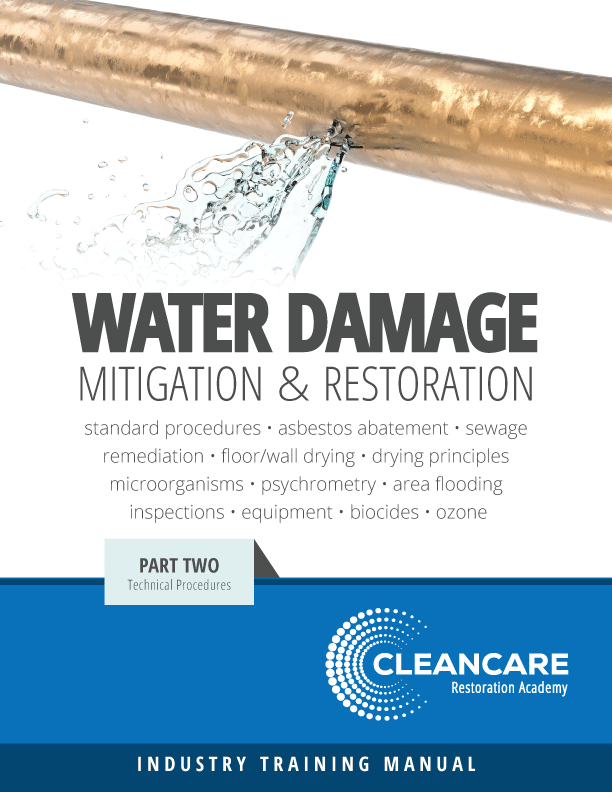Product Details
Part I of this series covers organization, management, marketing, and selling water restoration services. Now, WATER, Part II goes into technical procedures for processing water losses. So what's this one all about?
It provides the actual processing procedures for field technicians. Topics include: Preparations, Principles of Drying, Categories and Classes of Water Losses - Getting technicians ready to go with vehicle maintenance schedules and load lists; 4 principles, 3 categories, 4 classes of water damge - all the new IICRC consensus standards. Psychrometry from Start to Finish - You'll be able to follow step-by-step instructions and examples to prepare you to expertly read and interpret psychrometric measurements and apply them to your drying job. Equipment, Supplies - Descriptions, formulae, standards for airmover and dehumidifier usage and control; inspections and record keeping forms including Daily Humidity Record and Structural Materials Moisture Content Record. Biocides- Types, when to apply and when not to; ACGIH specifications. Microorganisms - This extensive chapter defines microorganisms in layman's terms, it covers the five requirements for growth and discusses each in detail. It covers health effects from mold exposure, it summarizes the NYC and EPA Guidelines for Mold Remediation. We discuss how to select a firm for sampling lab work. It ends with a basic outline for mold remediation for structure and contents. Ozone Use in Water Restoration - This chapter brings you up to date on ozone gas and it's limited role in water restoration. Asbestos Abatement - The only discussion of asbestos containing materials, rules and regulations, and what to watch for when doing demolition work on water loss claims. Initial Contact- Phone procedures designed to jump-start the claim, limit liability, increase productivity. Inspection Procedures - Inspection kits, consumer questions and how to answer them; client briefings, proper authorization - a complete inspection sequence! Standard Procedures for All Water Losses - Water damage has certain standard procedures that jump start the claim and enhance the technician's professionalism. Specific Situation Explained - In this chapter, we cover step-by-step procedures for: direct glue carpet, carpet with restorable cushion, carpet with non-restorable cushion, wood floor drying, wall drying and others. Unsanitary Water Losses - This chapter covers what to do on Category 3 or sewage damage claims. Complies with IICRC S500. Area-wide flooding; Crawlspaces - How to help you community when major flooding takes place, while generating business and income to keep you busy. There's even a complete section on crawlspace drying using natural bioremediation techniques that are safe and effective.
"Water Damage - Mitigation & Restoration - Part II" (formerly titled "Flood Damage Restoration...") literally is a complete training course for water restoration technicians. Admittedly, this is quite a bit to tackle in one book. Technicians still need to rely on common sense and experience. But Flood II is invaluable in providing the broad-based training to avoid liability, while specifying state-of-the-art restoration procedures.
Comprehension Quizzes at the end of each chapter, which are written in the IICRC multiple choice format, ensure knowledge retention, especially when used as a weekly in-house company training program. They also prepare technicians for the IICRC WRT and ASD certification programs.
